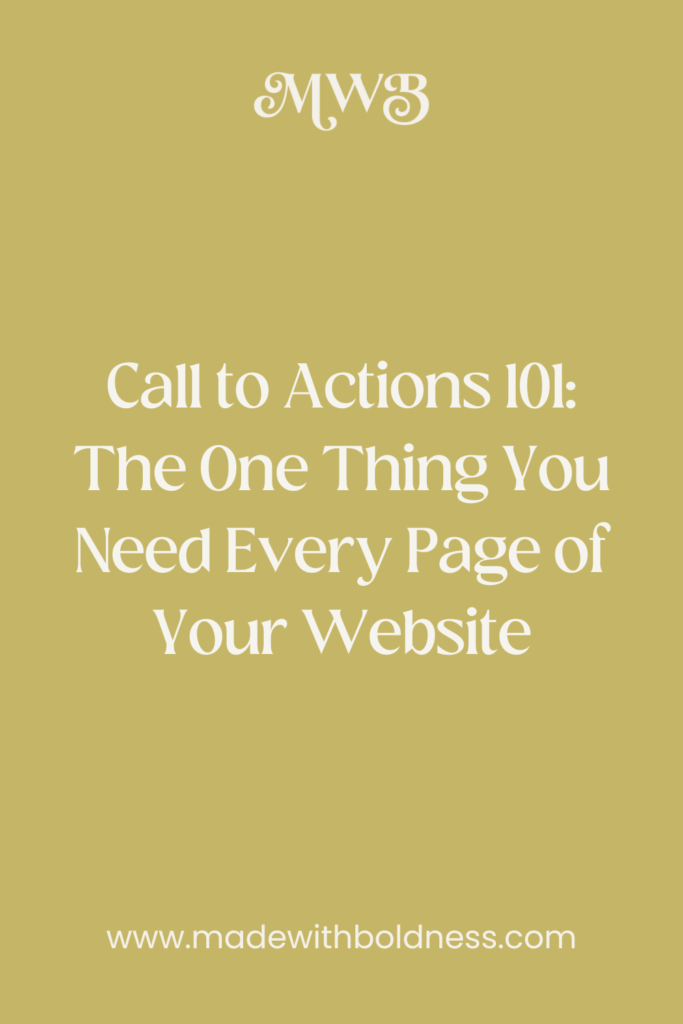Have you ever gone to someone’s website and immediately known you wanted to work with them? But when you tried to book with them you didn’t know what to do next? You probably got super confused and left their website. The solution to that website’s problem is call to actions (CTA’S).
Call to actions are simple. They tell your website visitors what they need to do next in order to work with you. You need a call to action on every page of your website otherwise you’ll miss out on potential clients.
And if you’re into nerding out about website stuff here are some interesting statistics about website call to actions that’s definitely worth the read.
Website Call to Actions 101
Decide on a primary call to action for each website page
Before adding call to actions to your website you need to decide what’s the most important decision you want someone to make on your website. This is your primary call to action and is the main goal of your website. You can choose other secondary call to actions but the main focus of your website will lead towards the primary.
How many call to actions should be on each page?
For example’s sake, let’s say that you’re a photographer. Your primary call to action is someone booking a call with you. Your secondary call to actions are someone subscribing to your email list and viewing your photo galleries.
Home page
On your home page, it’s beneficial to have call to actions throughout the page that lead to different areas of your website. In the example of a photographer, you would want to include a call to action to book a call. But you’d also want to have call to actions to check out your portfolio and subscribe to your email list.
Sales & landing pages
99.9% of the time you should only use one call to action on landing pages. Let’s say that you’re selling a course, your sales page’s only call to action should be to buy your course, so that there’s nothing else to distract someone from buying it.
Other pages
Generally like your home page, you can include multiple call to actions throughout the page but it’s sometimes case by case. For service pages, you would want to stick with mostly one call to action but on the flip side, your about page can be treated more like your home page.
Use buttons & avoid text links for call to actions
Your call to action links need to be buttons in order to stand out (in most cases). Almost everyone skim-reads so you need to make sure that your call to actions can be easily seen while skimming. Text links tend to blend in way too much and won’t convert as well compared to buttons.
Use urgent words for call to actions
Your buttons need to use urgent and exciting words that will call someone to take an action step. Having “learn more” on all your call to action buttons will not convert well. It’s okay to use the same words over and over again you don’t have to switch it up each time.
It may seem like you’re being over the top by saying, book a call, book a call, book a call, over and over again but it’s not. It’s key to repeat the same call to actions more than once. Because someone might not see it the first time or they needed more information before proceeding to the next step.
Did You Like This Blog Post?
If So, Make Sure to Pin it on Pinterest!
